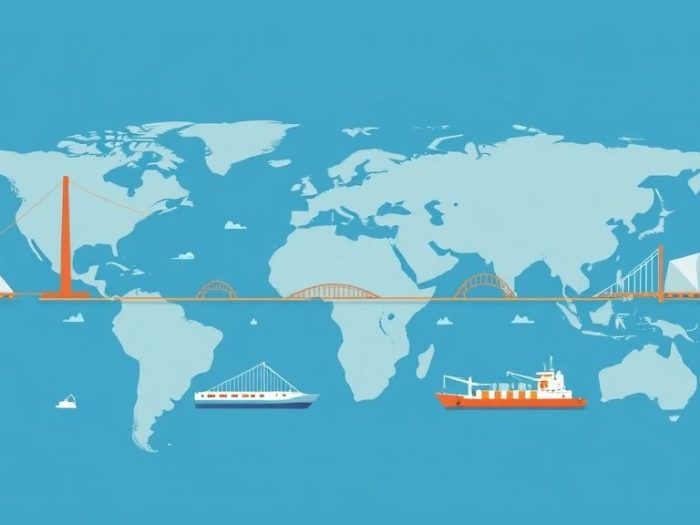Infrastructure is the backbone of any economy, providing essential services like transportation,
utilities, and communication. Investing in global infrastructure can offer stable returns and
a degree of protection against inflation. This article explores the opportunities and considerations
of investing in global infrastructure.
Understanding Infrastructure Investments
Infrastructure investments involve funding the construction, maintenance, and operation of
essential systems and facilities. These can include:
- Transportation (roads, bridges, airports)
- Utilities (water, electricity, gas)
- Telecommunications (fiber optics, cell towers)
- Energy (pipelines, renewable energy)
- Social Infrastructure (hospitals, schools)
Why Invest in Global Infrastructure?
- Stable Cash Flows: Many infrastructure projects generate predictable revenue through long-term contracts or regulated tariffs.
- Inflation Protection: Infrastructure assets, especially utilities and transportation, often have the ability to increase prices with inflation.
- Diversification: Infrastructure investments can have low correlation with traditional asset classes like stocks and bonds.
- Long-Term Demand: The need for infrastructure is expected to grow due to population growth and urbanization.
Global Infrastructure Investment Opportunities
Infrastructure needs are global, creating opportunities in various regions:
1. Developed Markets
Developed markets like the U.S., Europe, and Japan require significant investment in
upgrading aging infrastructure.
- Focus:
- Road and bridge repair
- Modernizing power grids
- Improving public transportation
2. Emerging Markets
Emerging markets in Asia, Africa, and Latin America need to build new infrastructure to
support their growing economies.
-
Focus:
- Transportation networks
- Energy infrastructure
- Water and sanitation systems
3. Renewable Energy Infrastructure
The transition to renewable energy requires significant investment in:
- Wind and solar power generation
- Energy storage
- Electric vehicle charging infrastructure
How to Invest in Global Infrastructure
- Infrastructure Stocks: Invest in companies involved in infrastructure construction, engineering, or operation.
- Infrastructure Funds: Mutual funds or ETFs (Exchange-Traded Funds) that invest in a portfolio of infrastructure companies.
- Infrastructure Bonds: Bonds issued to finance infrastructure projects.
- Private Equity: Direct investment in infrastructure projects (typically for institutional investors).
Risks of Investing in Global Infrastructure
- Political and Regulatory Risk: Government policies and regulations can significantly impact infrastructure projects.
- Economic Risk: Economic downturns can affect demand for infrastructure services.
- Construction and Operational Risk: Delays, cost overruns, and operational problems can affect profitability.
- Interest Rate Risk: Rising interest rates can increase borrowing costs for infrastructure projects.
- Currency Risk: Investing in foreign infrastructure projects exposes you to currency fluctuations.
Conclusion
Global infrastructure investments offer the potential for stable returns and inflation
protection, driven by long-term demand and essential services. However, it’s crucial to
understand the specific risks involved, particularly political and regulatory risks, and to
diversify your investments.
Related Keywords
Infrastructure investing, global infrastructure, infrastructure stocks, infrastructure
funds, infrastructure REITs, renewable energy infrastructure, water infrastructure,
transportation infrastructure, infrastructure investment risks, infrastructure investment
strategy.
Frequently Asked Questions (FAQ)
1. What are infrastructure investments?
Infrastructure investments involve funding the construction, maintenance, and
operation of essential systems and facilities like roads, utilities, and
communication networks.
2. What are the different types of infrastructure?
Types include transportation (roads, bridges), utilities (water, electricity),
telecommunications, energy, and social infrastructure (hospitals, schools).
3. Why are infrastructure investments considered stable?
Many infrastructure projects generate stable cash flows through long-term contracts
or regulated tariffs.
4. How do infrastructure investments provide inflation protection?
Some infrastructure assets, like utilities and transportation, can increase prices
or tariffs to keep pace with inflation.
5. What are some examples of developed markets for infrastructure investment?
Developed markets include the U.S., Europe, and Japan, where there’s a need to
upgrade aging infrastructure.
6. What are some examples of infrastructure needs in emerging markets?
Emerging markets require new transportation networks, energy infrastructure, and
water and sanitation systems.
7. How can I invest in global infrastructure?
You can invest through infrastructure stocks, infrastructure funds (mutual funds
or ETFs), infrastructure bonds, or private equity (for institutional investors).
8. What are the risks of investing in global infrastructure?
Risks include political and regulatory risk, economic risk, construction and
operational risk, interest rate risk, and currency risk (for international
projects).
9. Is global infrastructure a good investment for all investors?
It can be a good option for those seeking stable returns and inflation
protection, but the risks should be carefully considered, especially for
international projects.
10. Should I consult a financial advisor before investing in global infrastructure?
Yes, consulting a financial advisor is recommended for personalized guidance
based on your investment goals and risk tolerance.



